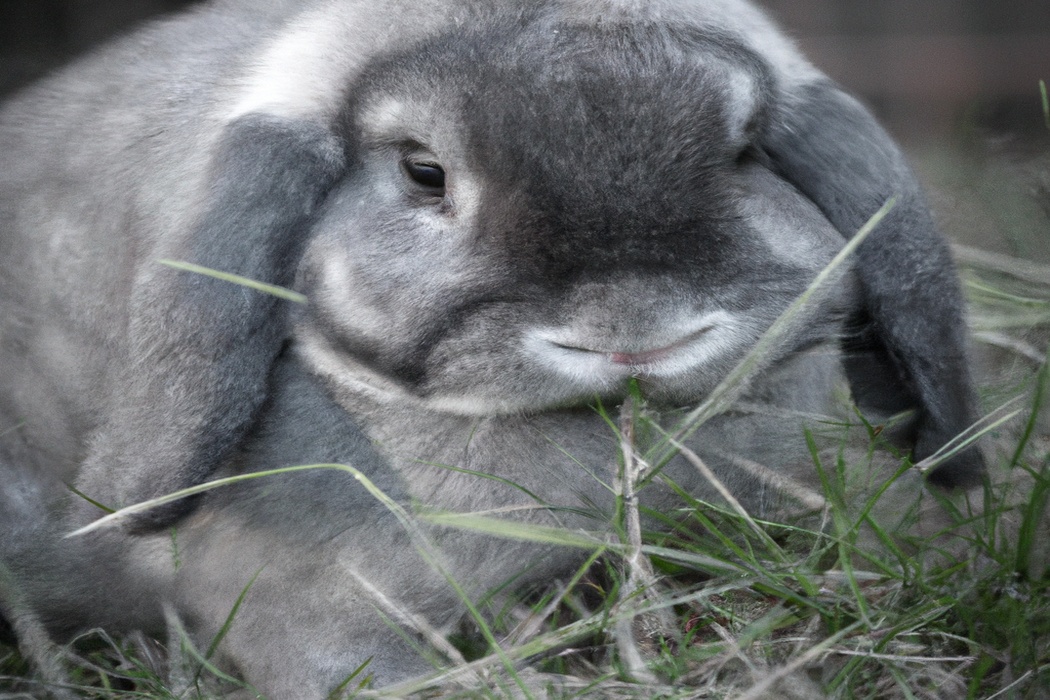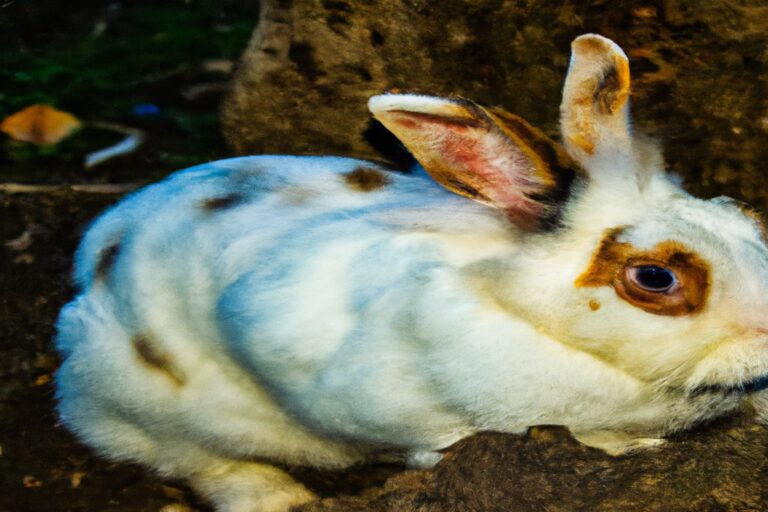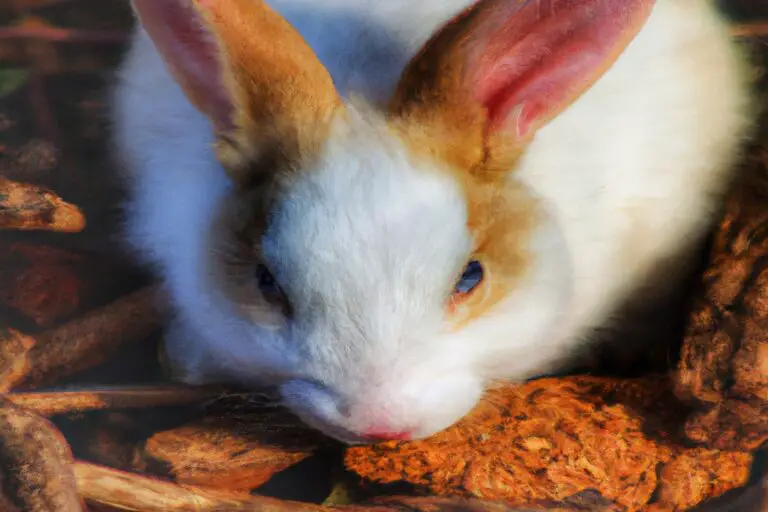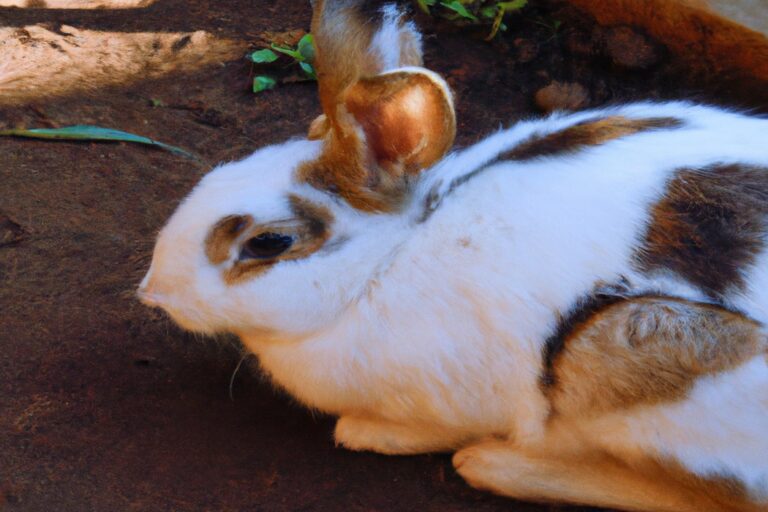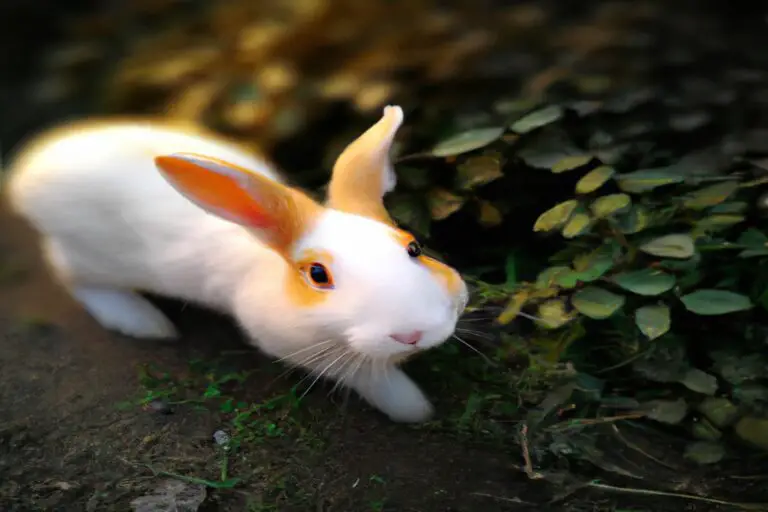Do Wild Rabbits Come Out At Night – The Nighttime Mystery
Key Takeaways:
- Wild rabbits are primarily nocturnal creatures, meaning they are most active during the night.
- Rabbits have adapted to be more active during nighttime to avoid predators.
- These animals have keen senses that allow them to navigate and forage for food in the dark.
- It is not uncommon to spot wild rabbits at dusk and dawn, as these are transitional periods when they may be active.
Have you ever wondered what wild rabbits get up to when the sun goes down? It’s a captivating thought, isn’t it?
These furry creatures, with their twitching noses and fuzzy tails, seem like they would be right at home in the moonlight.
So, do wild rabbits come out at night? Well, my friend, the answer is not as simple as you might think.
In this article, we’ll delve into the fascinating behavior of wild rabbits, exploring when they are most active and what factors influence their activity patterns.
We’ll also uncover the reasons why rabbits may choose to be active at night and discover the typical behaviors they engage in during the dark hours. Plus, we’ll share some tips on how to observe these elusive creatures in their nocturnal habitat.
Get ready to embark on a wild rabbit adventure under the stars!
| Question | Answer |
| Do wild rabbits come out at night? | Yes, wild rabbits are primarily nocturnal animals, which means they are most active during the night. They have adapted to this lifestyle to avoid predators and to take advantage of the cover of darkness to forage for food. |
Understanding the Behavior of Wild Rabbits
Wild rabbits have distinct behavior patterns that can be observed and understood.
Nocturnal or Diurnal: When are Wild Rabbits Most Active?
Wild rabbits are most active during the early morning and late evening hours, which means they are crepuscular animals. This is the time when they are more likely to come out of their burrows and engage in feeding, grooming, and socializing.
During the day, they tend to rest and avoid direct sunlight, while at night they may become more cautious due to the presence of predators.
So, if you want to spot wild rabbits, try looking for them during the twilight hours.

Factors That Influence Rabbit Activity Patterns
Several factors influence the activity patterns of wild rabbits.
- Predators: The presence of predators can affect when rabbits are active. They are more likely to be active during low-risk times, such as dawn and dusk.
- Food availability: The availability of food plays a significant role. Rabbits are most active when there is abundant vegetation to feed on.
- Temperature: Extreme temperatures, whether hot or cold, can impact rabbit activity. They may reduce their activity during very hot or cold periods.
- Reproductive cycle: During the breeding season, rabbits may be more active as they search for mates and defend their territory.
- Habitat: The specific habitat of rabbits can dictate their activity patterns. Some habitats may provide more cover or food sources, influencing rabbit behaviors.
Remember, these factors can vary depending on the rabbit species and local environmental conditions.
Why Rabbits May Be Active at Night
Rabbits may be active at night due to predators and safety concerns, feeding habits and foraging opportunities, and temperature and weather conditions.
Predators and Safety Concerns
Predators such as foxes, coyotes, and birds of prey pose a threat to wild rabbits. These predators are known to hunt at night, making it risky for rabbits to be active during this time.
Due to this safety concern, rabbits have evolved to be more active during dawn and dusk when predators are less active.
This allows them to find food and mate while minimizing their exposure to potential threats. Being alert and having keen senses also helps rabbits stay safe in their natural habitat.
Feeding Habits and Foraging Opportunities
Feeding Habits: Rabbits are herbivores and primarily feed on vegetation such as grass, leaves, and twigs. They have a high fiber diet and need to continuously graze to maintain their digestive health.
Rabbits are known to be crepuscular, meaning they are most active during dawn and dusk.
Foraging Opportunities: In the wild, rabbits have a variety of foraging opportunities. They will search for food in meadows, fields, and forests, where they can find a diverse range of plants to eat.
They are also skilled at digging and will burrow to uncover roots and tubers for sustenance.
Their sharp teeth help them efficiently consume vegetation. Overall, rabbits have adapted to feed during specific times of the day when there is ample food availability.
Their feeding habits and foraging opportunities are crucial for their survival in the wild.
Temperature and Weather Conditions
Temperature and weather conditions play a significant role in the activity patterns of wild rabbits.
During hotter months, they tend to be more active during the early morning and late evening to avoid the midday heat.
In colder temperatures, rabbits may be more active during the day to take advantage of the warmth.
Additionally, weather conditions such as rain or strong wind may also affect their activity levels.
Rabbits will often seek shelter or stay hidden during unfavorable weather conditions to protect themselves from predators.
Typical Behavior of Wild Rabbits at Night
At night, wild rabbits communicate, socialize, engage in nesting and reproductive activities, and explore and mark their territories.
Communication and Social Interactions
Wild rabbits communicate and interact with each other primarily through body language and vocalizations.
They use various body movements, such as hopping, stamping, and thumping their hind legs, to convey different messages to other rabbits.
These behaviors include warning signals, establishing dominance, and attracting mates.
They also make different sounds, like soft purring or loud shrieks, to express emotions and communicate with other rabbits.
Social interactions among wild rabbits include grooming each other, sharing food, and forming social hierarchies within their groups.
Nesting and Reproductive Activities
Nesting and reproductive activities are important aspects of a wild rabbit’s life. During nesting, female rabbits create burrows or use existing ones to build nests.
They line these nests with fur and grass to create a comfortable environment for their young.
Reproduction usually occurs between late winter and early fall, with females giving birth to multiple litters each year. The gestation period is around 28-35 days, and the average litter size is 3-8 babies.
These activities ensure the continued survival and growth of the rabbit population in their natural habitat.
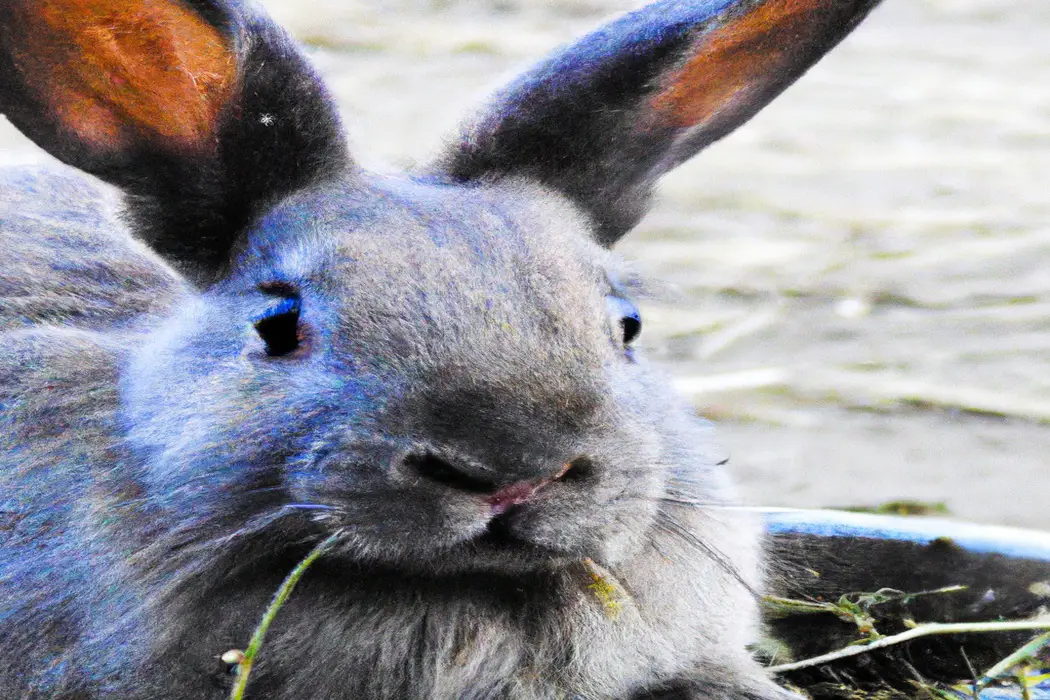
Exploring and Marking Territories
Wild rabbits explore their territories to find food, mates, and suitable shelter.
They mark their territories with scent glands and urine to communicate with other rabbits and establish dominance.
This marking behavior helps them establish boundaries and avoid conflicts with other rabbits.
Exploring and marking territories is a natural instinct for wild rabbits and an essential part of their survival and social behavior.
Tips for Observing Wild Rabbits at Night
Tips for Observing Wild Rabbits at Night:
- Choose a suitable location.
- Be patient and quiet.
- Utilize night vision devices.
Choose the Right Location
To choose the right location for observing wild rabbits at night, consider these factors:
- Look for areas with abundant vegetation, such as meadows, fields, or gardens, as rabbits are often drawn to areas with a good food source.
- Seek out places with natural cover, like bushes or thickets, where rabbits can hide.
- Avoid highly populated areas or places with heavy human activity, as this may disrupt the natural behavior of the rabbits.
- It can be helpful to scout locations during the day to observe rabbit activity and identify potential nighttime hotspots.
Remember, finding the right location is key to increasing your chances of observing wild rabbits at night in their natural habitat.
Be Patient and Quiet
To observe wild rabbits at night, it’s important to be patient and quiet.
Rabbits are skittish creatures and any sudden noise or movement can scare them away.
Find a comfortable spot and remain still for long periods of time.
Avoid making any loud noises, like talking or rustling of clothes.
Practice patience and allow the rabbits to become accustomed to your presence.
The more quiet and still you are, the more likely you are to catch a glimpse of these elusive creatures.
Use Night Vision Devices
If you want to observe wild rabbits at night, using night vision devices is a great option. These devices can enhance your visibility in low-light conditions, allowing you to see rabbits in the dark.
Night vision binoculars, monoculars, or scopes are available on the market and can be useful for spotting rabbits without disturbing them.
With the help of night vision, you can enjoy watching these adorable creatures in their natural habitat, even after the sun goes down.
Frequently Asked Questions
Are wild rabbits completely nocturnal?
Wild rabbits are not completely nocturnal. They are crepuscular, which means they are active during dusk and dawn.
This is when they forage for food and socialize with other rabbits.
However, they can also be active during the day and night, especially if they feel safe in their environment. So, if you want to catch a glimpse of wild rabbits, your best chances are during the early morning or evening hours.
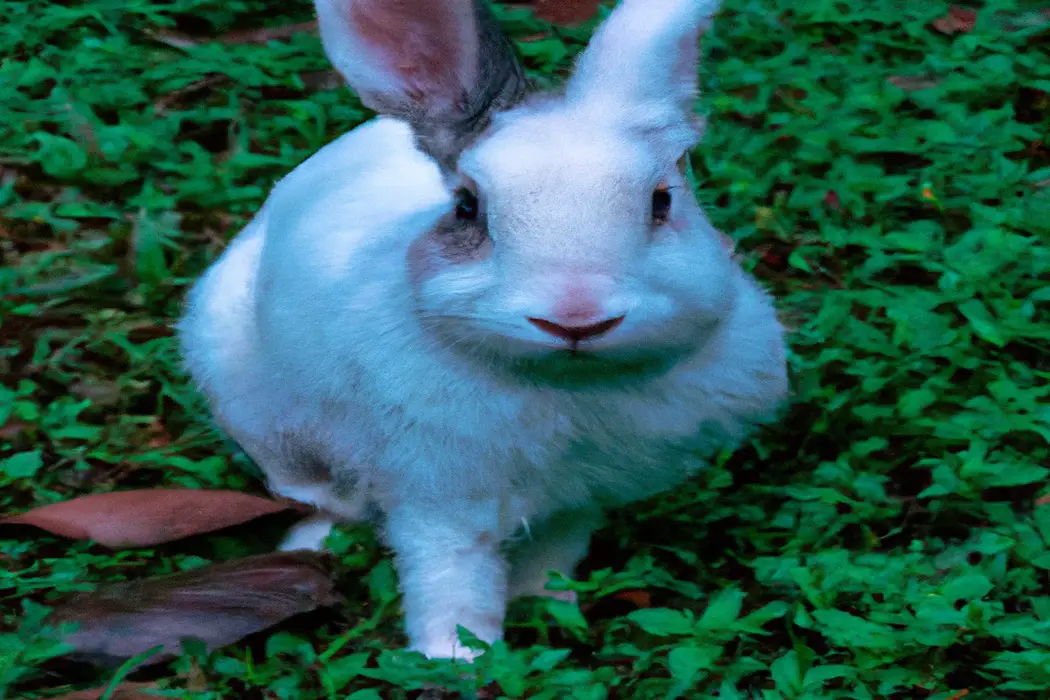
Why do rabbits freeze when they sense danger?
Rabbits freeze when they sense danger as a self-protective instinct. By freezing, they become less noticeable to predators.
This behavior allows rabbits to blend in with their surroundings and increases their chances of remaining undetected.
It helps them avoid attracting attention and gives them a better chance of escaping if necessary. Freezing is just one of the many survival strategies that rabbits have developed to stay safe in the wild.
What are the signs of a rabbit’s presence at night?
At night, you can look for signs like chewed plant stems, tracks or footprints in soft soil, droppings, and nibbled vegetation to determine if rabbits are present in your area. Another clue is the sound of hopping or rustling through vegetation.
If you spot burrows or nests in your yard, it’s likely that rabbits are active there as well.
Additionally, if you have seen rabbits during the day in nearby areas, there’s a good chance they will also come out at night.
Final Verdict
Understanding the behavior of wild rabbits is crucial in determining their activity patterns.
While rabbits are typically known to be crepuscular, with increased activity during dawn and dusk, they can also be active at night under certain conditions.
Factors such as predation risks, feeding habits, and weather conditions play a role in their nocturnal behavior.
When observing wild rabbits at night, it is important to choose the right location, be patient and quiet, and use night vision devices.
By creating a rabbit-friendly environment, we can coexist with these fascinating creatures and appreciate their nocturnal activities.

